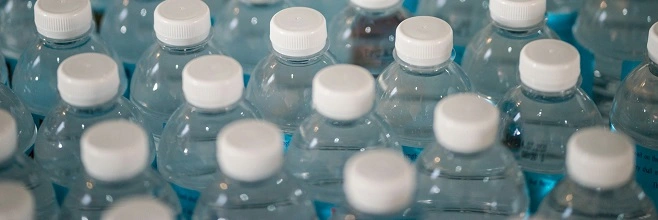The addition of light stabilizers for plastics can effectively prevent the photodegradation of polymers. TINTOLL's comprehensive range of solutions including hindered amine light stabilizers (commonly known as HALS), hindered benzoates and UV absorbers can mitigate degradation of plastics exposed to harmful UV radiation and achieve excellent lifetime.
The UV light stabilizer can be divided into UV absorbers and hindered amine light stabilizers (HALS):
UV light absorbers slow down the degradation process by preferentially absorbing harmful UV radiation and dissipating it as heat.
Therefore, UV absorber chemicals can effectively protect the contents in packaging products (such as wrapping films or bottles, etc.). Light stabilizers for plastics also protect other UV-sensitive additives such as pigments and flame retardants.
HALS are very effective stabilizers for polymers, especially polyolefins. They do not absorb UV radiation, but inhibit polymer degradation by scavenging free radicals. Remarkable plateaus are achieved at relatively low concentrations. The high efficiency and long life of HALS is due to a cyclic process where HALS are regenerated rather than consumed during stabilization.
Therefore, HALS are the most effective additives for light stabilization of polyolefins and they are very effective in high surface area applications such as films and fibers. HALS are also efficient UV light stabilizers that can prolong the service life of polyolefin products.
Selection of an appropriate light stabilization system depends on material type, end application, material thickness, environment of use, interaction with other components of the system, and performance and cost expectations.
Ultraviolet absorbers (UVA) and hindered amine light stabilizers (HALS) are often used together to show a synergistic effect to achieve photostabilization of polymeric materials.
Since 1989, TINTOLL has actively participated in the development of innovative UV light stabilizer and application research, and currently has more than 100 specialty products to meet the diverse needs of customers. TINTOLL, one of the leading UV stabilizer suppliers and manufacturers, provides professional formulations for different composite materials. In addition, TINTOLL also provides customers with light stabilizers for plastics development services for special applications.
UV stabilizers are used to address degradation issues associated with exposure to sunlight. UV light stabilizers can be divided into Hindred Amine Light Stabilizer and Light Stabilizer Blends. HALS work by scavenging and terminating free radicals and decomposing hydroperoxides into non-radical species. Hindered amine light stabilizers (HALS for short) are derivatives of 2,2,6,6-tetramethylpiperidine. They are extremely effective stabilizers against light-induced degradation of most polymers such as polyolefins, styrene, polyurethanes, polycarbonates and cellulose.
UV light stabilizers are essential additives in various industries, such as plastics, coatings, and textiles, to protect materials from the harmful effects of UV radiation. The roles of light stabilizers for plastics can be summarized as follows:
Hindered Amine Light Stabilizers (HALS): HALS hindered amine light stabilizers act as radical scavengers, inhibiting the formation of free radicals that lead to material degradation.
Photostabilization: These UV stabilizer chemical additives enhance the longevity and appearance of products exposed to sunlight, preventing discoloration, embrittlement, and other UV-induced damage.
Compatibility: Ensuring that light stabilizers for plastics are compatible with the base material is crucial for effective UV protection without altering the material's properties.

HALS are highly effective in high surface area applications like films and fibers due to their ability to scavenge free radicals, which helps prevent the rapid degradation of these materials exposed to UV radiation. This is crucial for maintaining the appearance and integrity of products like outdoor textiles and packaging films.

In the light stabilization of polyolefins, HALS stand out as the most effective additives. These light polymer stabilizers protect polyolefin-based products, such as plastic containers or pipes, by inhibiting the adverse effects of UV exposure, which can lead to color fading, embrittlement, and reduced mechanical properties.

HALS also serve as highly effective UV light stabilizer for longer polyolefin articles' service life. By preventing thermal degradation, they help extend the lifespan of polyolefin-based products like automotive components, construction materials, and industrial equipment, ensuring their structural integrity over time.
Both UV light stabilizers and UV absorbers are UV protection additives.
UV absorbers are chemicals that absorb UV radiation and prevent it from damaging materials. UV absorbers dissipate energy in less damaging forms such as heat.
UV light stabilizers act as free radical scavengers, reducing the reactivity of any free radicals formed within the polymer, they are regenerated in the process of action.
UV absorbers are classified by chemical classes such as benzotriazoles, benzophenones, and triazines. Each category has its own UV absorbing properties. For example, benzophenone and triazine types tend to absorb more strongly in the short wavelength UV-B region than benzotriazole types.
The UV light stabilizer may be a hindered amine light stabilizer (HALS). HALS do not absorb UV rays. Instead, they inhibit polymer degradation by removing free radicals formed when the polymer oxidizes. This process is often cyclic, as the HALS can regenerate and continue to be effective.